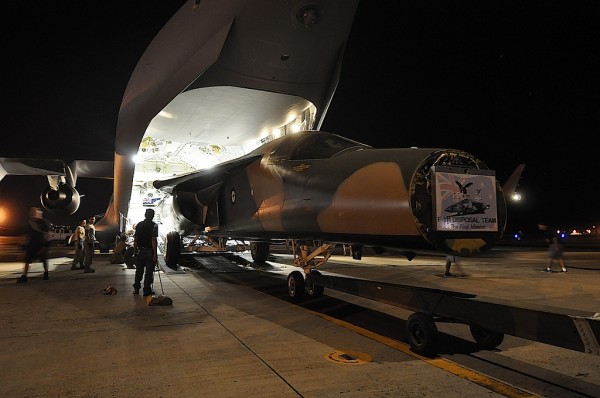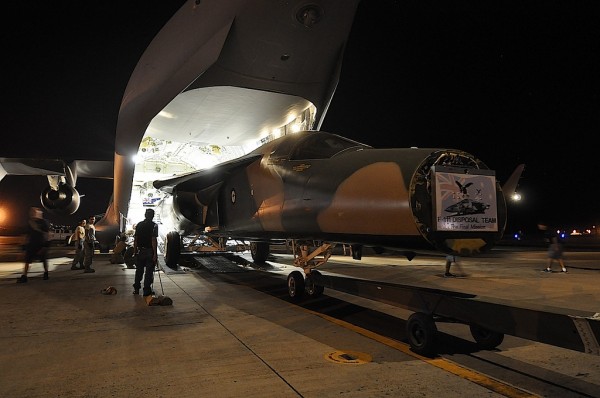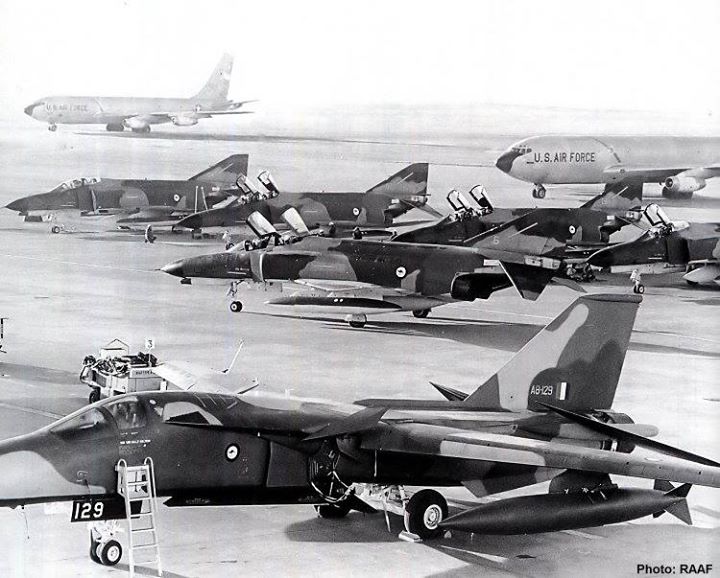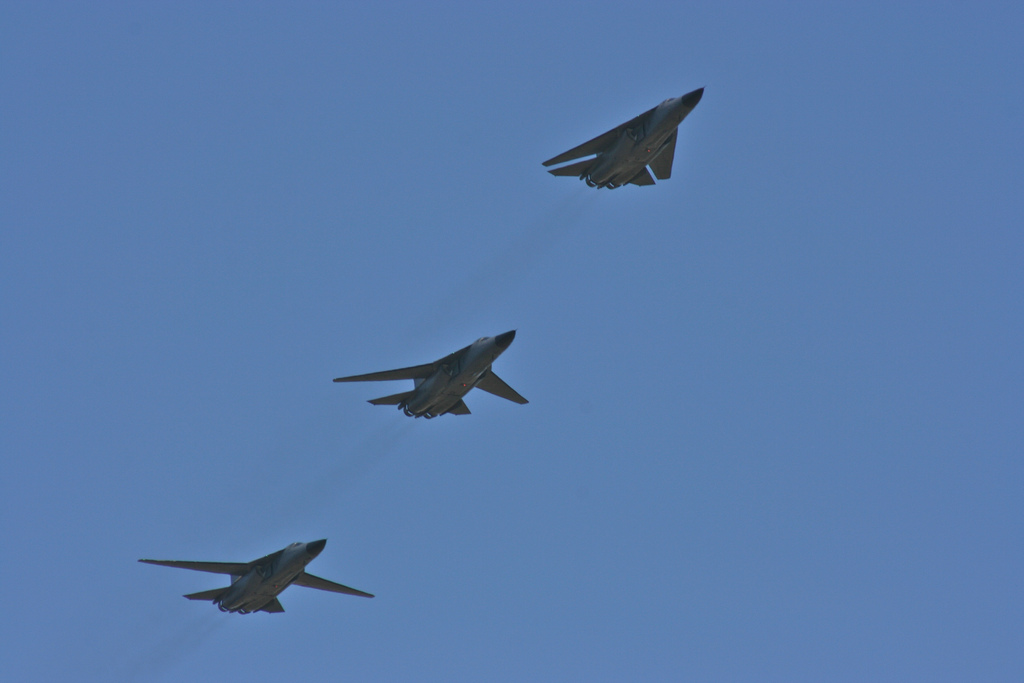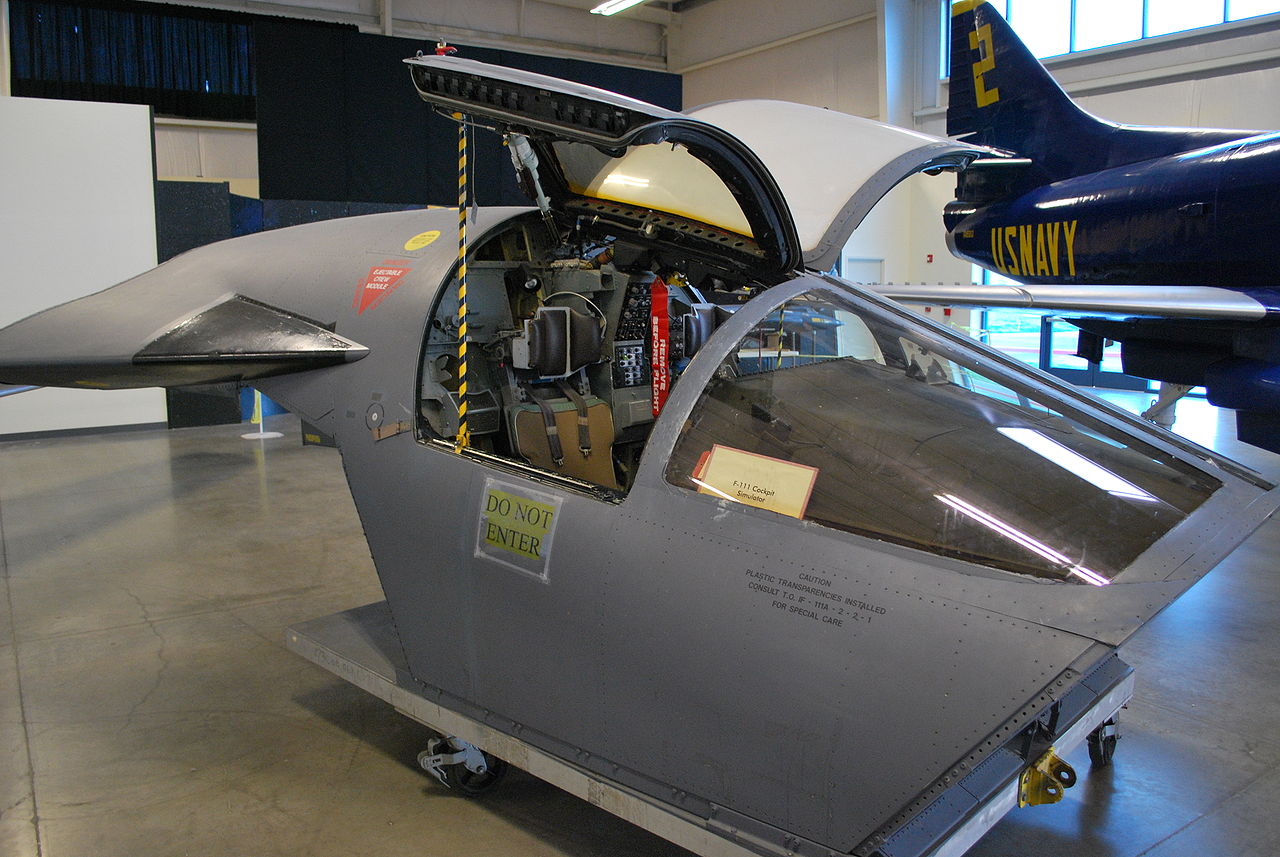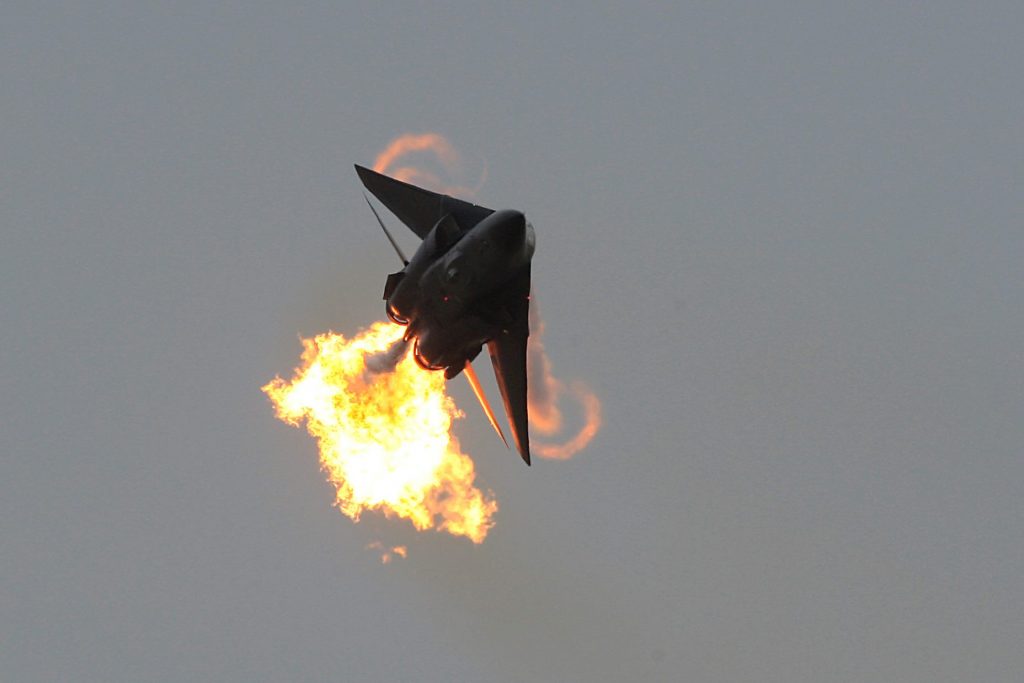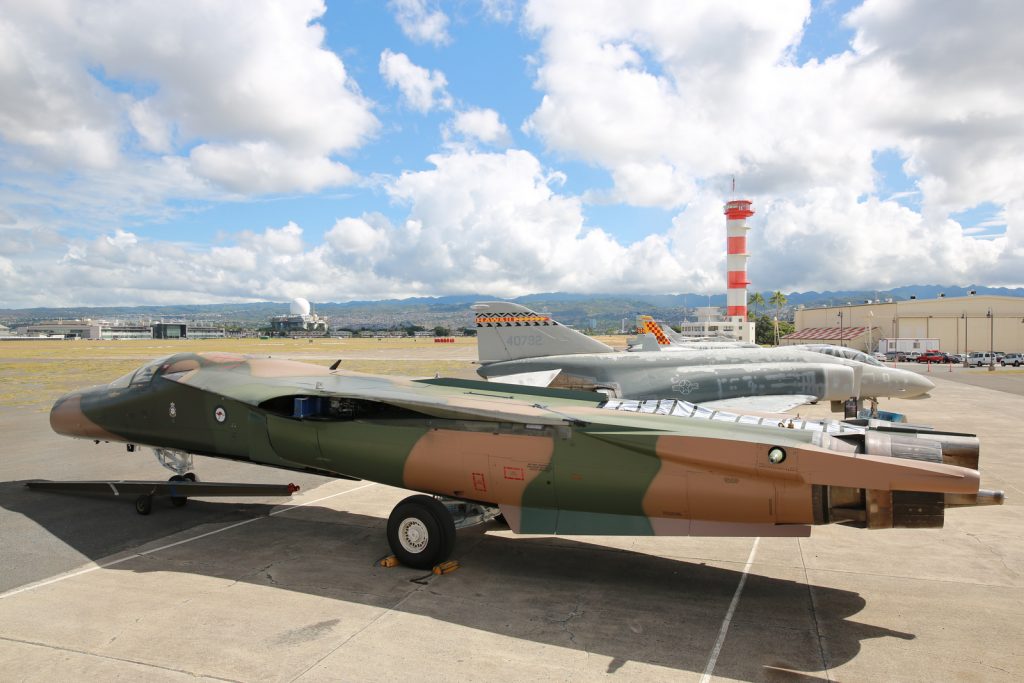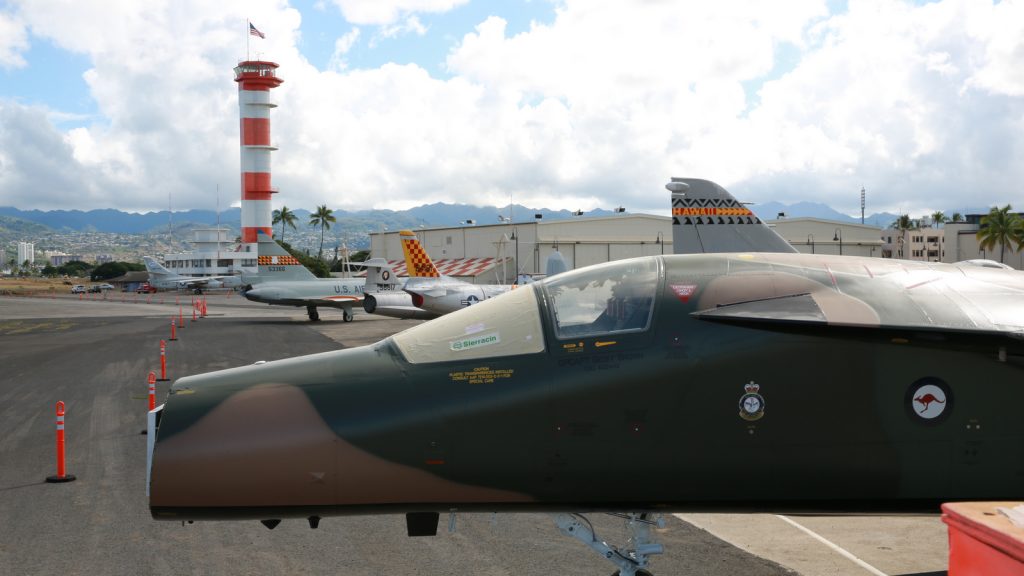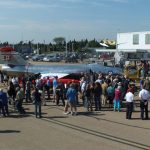(Image Credit: Pacific Aviation Museum)
The Royal Australian Air Force-restored General Dynamics F-111C that has been gifted to the Pacific Aviation Museum in Pearl Harbor, Hawaii, arrived at Hickam Air Field at Joint Base Pearl Harbor a couple of nights ago, carried from RAAF-Amberley by an RAAF Boeing C-17 Globemaster. The arrival of the fuselage, was the final piece of the delivery of the plane with the wings and tail shipped separately. The plane was then pulled over to the museum’s Ford Island location over public roads in the middle of the night, so as to avoid snarling traffic.
(Image Credit: RAAF)
The plane which was one of seven restored by the RAAF, was gifted outright to the Pacific Aviation Museum, whereas the other six were placed on long term loan to aviation museums within Australia, dispatched to each with much fanfare earlier this year. The first of the planes went to the South Australian Aviation Museum in Port Adelaide, South Australia, the second to Fighter World in Williamtown, New South Wales, third to the Historical Aircraft Restoration Society (HARS) located in Illawarra, New South Wales, fourth to the Queensland Air Museum located in Caloundra, Queensland and the fifth plane arrived at the Australian Aviation Heritage Centre in Darwin, Northern Territory. The final plane of the domestic six was delivered just last month to the Evans Head Memorial Aerodrome Heritage Aviation Association (EHMAHAA) in Evans Head, New South Wales.
(Image Credit: Jason Baker, CC 2.0)
(Image Credit: Justin Smith CC 3.0)
(Image Credit: RAAF)
(Image Credit : DG Photography)
(Image Credit: Pacific Aviation Museum)
(Image Credit: Pacific Aviation Museum)
The F-111 was the world’s first fighter with variable sweep wings, which allowed the wing configuration to be changed while in flight. With wings fully extended, the F-111 could take off and land in as little as 2,000 feet, with the wings fully swept back, it could reach supersonic speeds at high or low altitudes. Capable of attacking in all weather conditions, the F-111 was also equipped with terrain-following radar, which allowed it to hug the ground at supersonic speeds, earning it the affectionate nickname within the RAAF of “Pig” for abilities “down in the dirt.” The planes also featured a unique crew escape capsule where the entire passenger compartment could be ejected from the plane in the event of an airborne catastrophic emergency.
The F-111 enjoyed an illustrious carer in both the American and Australian air forces, participating in the Vietnam War, “Operation El Dorado Canyon,” the 1986 bombing of Libya as well as First Gulf War. While the Australians did not have much occasion to use the planes in anger, their formidable capabilities provided the backbone of their aerial strike force from 1973 to 2010, and proved to be exceeding popular with the Australian public, performing their signature “dump and burn” maneuvers at air shows and major spectator events. The United States retired the F-111 from offensive combat duty in 1996 and the remaining electronic warfare planes in 1998. The F-111C variant differed from its American counterparts very little, featuring strengthened landing gear, in fact the F-111s used by both nations differed so little that several ex-USAF planes were bought by the RAAF over the years to replace planes that had been retired or lost, receiving the minor modifications required to meet the “C” spec and pressed into service. The retirement of the F-111C was not without controversy, abetted by the public’s love of “The Pig.” While originally intended to soldier on through 2020, when the Lockheed Martin F-35 Lightning II was to replace them, the discontinuance of support from General Dynamics, and rising maintenance costs to keep the old ‘birds flying led to the line’s “early” retirement, with the Boeing F/A-18F Super Hornet brought in bridge the gap until the F-35 arrives.
A8-130, which had been painted in “defence grey” has been restored to the camouflage paint scheme and markings that F-111Cs wore when they began flying with the RAAF, and bears the name of her most famous pilot, current Chief of the Royal Australian Air Force, Air Marshal Geoff Brown. The plane will be re-assembled and prepared for display by a special team of RAAF technicians, who accompanied the fuselage for the trip halfway across the Pacific to the the Pig’s new home in Pearl Harbor.







